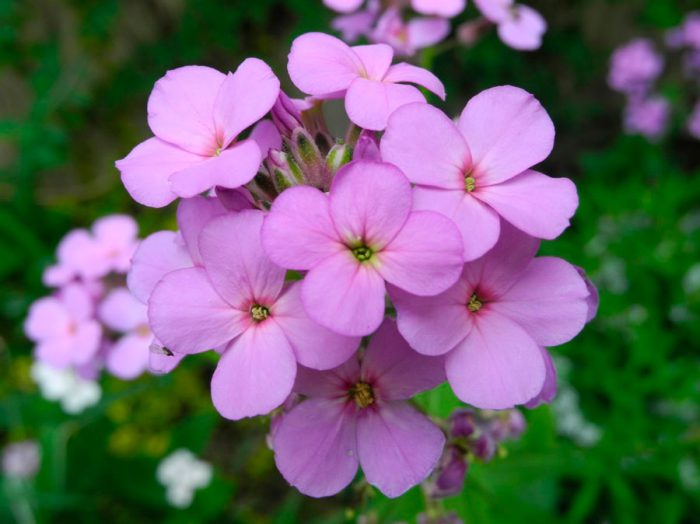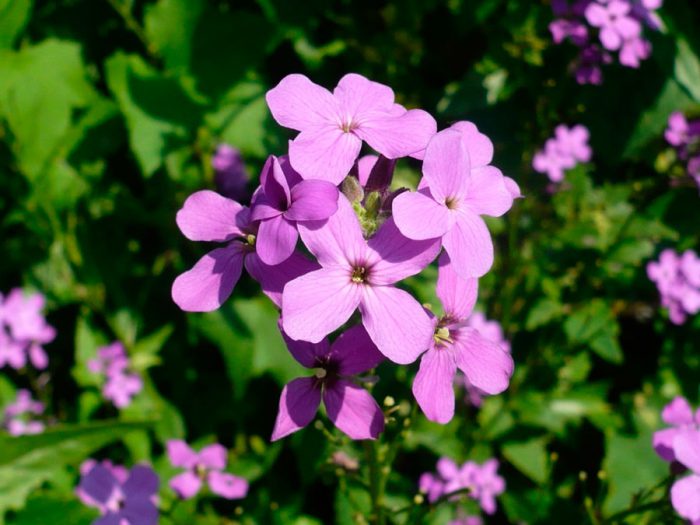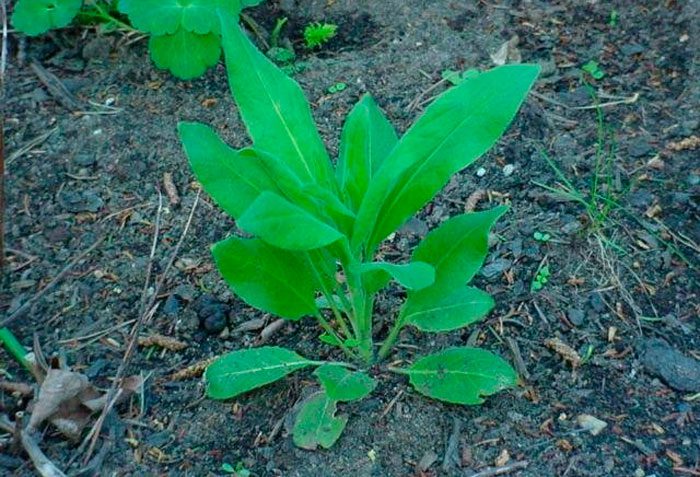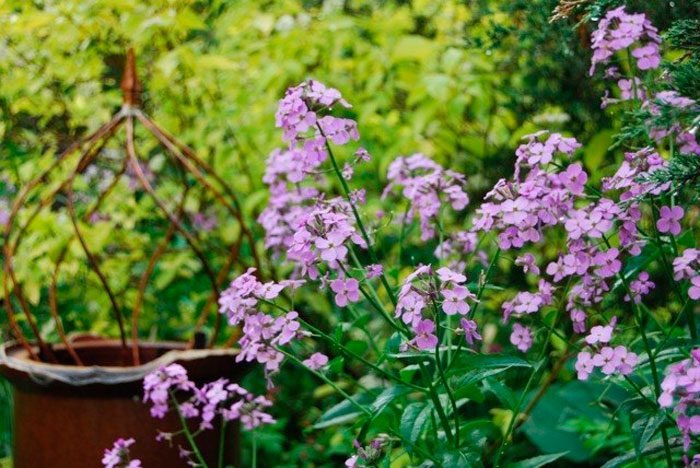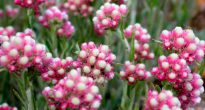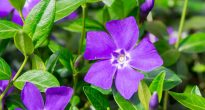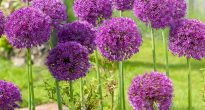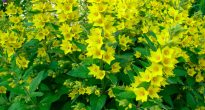The night violet has several names, among which one can note: hesperis (Latin Hesperis matronalis), Matrona's nocturnal, or simply nocturnal. There are up to 30 species of nocturnal, which can be found in nature in the Caucasus, within Eastern Europe, Western Siberia and in the Mediterranean countries. The plant began to be cultivated in Europe from the middle of the 16th century. For Queen Marie Antoinette, the Hesperis was a favorite flower. In the 18th century, flowers became interested in our area. Gardeners began to spread it, and soon it could be seen in the gardens and parks of landowners, where the night violet adorned luxurious flower beds.
Nowadays, interest in garden and park farms is growing more and more, where masters of landscape design take part in the design. And here the night violet again began to gain great popularity.
Content
Description of the night violet
Vechernitsa grows up to 1 meter in height and has a widely developed stem, closer to the top, covered with silky hair. Green leaves have the same soft and delicate coating. The leaves are attached to the plant with or without cuttings, while they have a lanceolate shape with a sharp tip. The leaves are long, up to 10-12cm, and up to 3-4cm wide and are arranged alternately on the stem.
Night violet inflorescences have many small flowers of lavender or pure white. Inflorescences are in the form of clusters, up to 30 cm long, in the form of large cylinders. The inflorescences emit a pleasant aroma, reminiscent of the smell of levkoy. The flowers have 4 petals arranged in a cross and reach a size of 1-2 cm. You can find a variety of night violets with double flowers.
Hesperis begins to bloom at the end of May and blooms for a month or a half, depending on atmospheric conditions. In hot, dry periods, it does not bloom so actively. After the end of the flowering period, the fruiting period begins, characterized by the appearance of fruits in the form of pods, in which the seeds are located. Once ripe, small brown seeds remain viable for two years. Night violet reproduces very successfully by self-seeding. To prevent the flower bed from overgrowing with young shoots, they should be planted every three years.
Growing and care
Night violet thrives, both in well-lit places and in the shade of large trees. Neutral or slightly alkaline fertile lands with good drainage are more suitable for its cultivation.
At the beginning of the season, when the active development of the flower begins, it needs good watering, but it does not tolerate stagnant water in the soil, while it does not develop well and blooms in hot weather with a lack of watering. Therefore, timely, but not excessive watering is the main condition for the normal development of night violets.
If the nocturnal has a high stem, then it can be tied up so that it does not break off or fall under its own weight or from the force of wind and rain.
Hesperis is a fairly frost-resistant plant and does not require special measures to be taken to protect it from low temperatures, except that in winters with little snow, but frosty winters, additional shelter must be built for it.
Reproduction of night violets
As mentioned above, the night violet reproduces well by self-seeding, but, if desired, seedlings can also be used. To do this, you need to acquire containers for seedlingsand then pour soil into them. In early April, seeds are poured directly onto the surface of the earth, and covered with a mixture of peat and humus, with a layer of 0.5-1 cm. After that, the layer of peat and humus is slightly compacted and watered, after which the container with the sown seeds is covered with plastic wrap to create a greenhouse effect. After 2-3 weeks, at an ambient temperature of + 20 ° C, the first shoots will appear.
Under optimal conditions, good moisture, young shoots will begin to actively grow and develop, and when the first 2-3 leaves appear, they can be transferred into the ground, into the open air. At the same time, it is necessary to constantly water them and loosen the ground, for air to reach the plant roots. By the beginning of autumn, stems of night violets, densely covered with leaves, are formed on the flowerbed. At the beginning of the next season, young plants will bloom profusely.
In order not to bother with seedlings, you can plant young plants after self-sowing and leave as many young plants as needed for reproduction.
Seeds can be sown in the ground either in the spring, after the ground has completely thawed, or in the fall, before the first frosts.
In the third year of the life of the hesperis, its attractiveness drops sharply, therefore, it is recommended to renew the crops every year. This means that it blooms as abundantly as possible in the second year of life. This is one of the significant disadvantages of growing night violets.
Application in landscape design
Vechernitsa looks very good when planting in groups in large areas. Its bright and tall inflorescences are very visible at great distances. It looks great on the banks of artificial reservoirs, next to ornamental grasses or ferns. Thanks to its pronounced aroma (for which it was called the night violet), it is perfect for creating fragrant gardens and gardens for butterflies, since its leaves and stems are eaten by some species of caterpillars. It is very often planted in places of evening recreation to enjoy this unique aroma, which intensifies in the evening.
Matrona's evening party is used in groups when creating tall flower beds, while one should take into account the fact that its leaves quickly lose their decorative effect, therefore, late-flowering annuals should be planted nearby in order to hide this drawback. Night violet flowers can be used to make bouquets, and the plant itself is an excellent honey plant.
The stems of hesperis contain up to 50% oils, which makes it possible to use it as feed for cattle.
The leaves and stems of the night violet are used in folk medicine as a diaphoretic and diuretic.
In conclusion, it is worth noting that the closest relative of the hesperis is an ordinary cabbage and the night violet has nothing to do with the usual violets. They called it violet because of its pronounced aroma, and at night, because in the evening, this aroma increases dramatically.


Watch this video on YouTube

